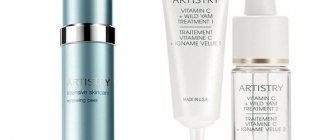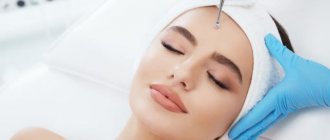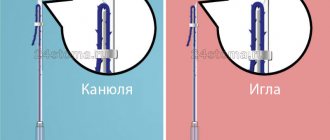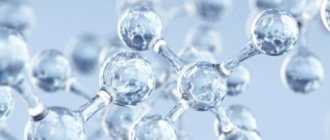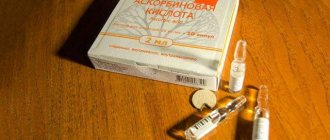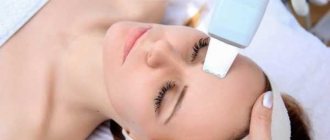Cosmetology is developing at a fast pace, which is explained by the high demand for such procedures. Among hardware techniques, galvanization is popular. It is suitable for both women and men. To conduct a session, a special device is required that generates a constant electric current.
Galvanization has both indications and contraindications, so not everyone can do it. It should be borne in mind that the technique involves exposure to electric current. The procedure can also be performed at home. For this purpose, there are mobile devices that can be purchased in specialized stores.
What is electroplating
In hardware cosmetology, with the help of galvanization, rehabilitation procedures are carried out in case of health difficulties. One of the methods of rehabilitation is galvanization - exposure of the human body to direct electric current of low voltage and strength.
Galvanic current, passing through the cells of the body, enters various tissues and organs, influencing the course of natural biological processes . Activates intracellular synthesis, blood circulation and the formation of the physical and chemical work of the endocrine system. It has a profound effect on both the skin and the entire body as a whole.
The procedure is painless. For the therapeutic and cosmetic work of galvanization, wherever it is performed: on the head, neck, torso or limbs; The physiotherapist is closely observing. Before entrusting the problem area to the doctor, you should remove all metal parts of the wardrobe and expose, if necessary, the part of the body that will undergo treatment.
Afterwards, it is advisable for the patient to rest for about 30 minutes, and the doctor will observe the body’s response to the influence of electrical signals.
What is skin conductivity related to?
Different tissues of our body respond to electric shock to varying degrees. This property is associated with the concentration of ions and the intensity of the fluid exchange process. The stratum corneum of the skin is the main difficulty. Of course, resistance cannot be compared with electrical insulation, but it is still noticeable. Thus, the ability of the skin to respond to applied effects is associated with the stratum corneum.
Skin can make it difficult for current to pass through
Current conductivity.
| Parameter | Structure |
| Conducts current well | Fluids, muscles, tissues of internal organs, nerves. |
| Poor conductivity | Nails, hair, skin. |
Factors affecting current conductivity.
| Parameter | Factor |
| Increase conductivity | Swelling, trauma, thinning of the stratum corneum, dilated blood vessels. |
| Reduce conductivity | Thick layer of subcutaneous fat, hyperkeratosis. |
Important ! Before the iontophoresis procedure, you need to additionally degrease the skin.
Damaged parts of the skin perceive electric current more strongly.
When hairs get under the electrode or areas where nerves exit are touched, discomfort is possible.
Each part of the human body is characterized by its susceptibility to current.
There are many factors that influence current conductivity
When the procedure begins, electricity meets the resistance of the stratum corneum of the skin. The main part of the current energy is spent precisely on overcoming this section, which is why reactions that are significant for galvanization occur here.
From the above, we can conclude that the effect of electric current will be less as the depth of the tissue increases.
Actions of galvanic current
A direct electric current, with a voltage of 30 to 80 V and a force of up to 50 mA, penetrates into cell tissue using active and passive electrodes. Charged ions are created between these electrodes and, moving, they enhance metabolism and regenerative functions in the body.
This flow of ion movement contributes to the occurrence of certain chemical reactions in the human body. The composition of glands, fluids and muscle tissue includes: proteins, colloids, glycogen, salts and so on. It is their molecules that the current causes to disintegrate into charged ions. This causes irritation of skin receptors, as there is a jump in ion saturation.
The impulses arising in this case are rapidly transmitted to the central nervous system, and the body’s overall positive reaction does not take long to occur.
The action of galvanic current shows excellent results in combination with medications. By reacting with each other, they increase efficiency and increase the positive outcome of the procedure. Basically, two methods of galvanization are used.
How did iontophoresis come about?
The usefulness of the effect was first noticed in the 18th century, but it began to be used in medical practice at the beginning of the 20th century, when scientist Stéphane Leduc from France presented his works to the public.
This effect began to be actively used at the beginning of the 20th century.
Scientists of that time called the procedure very promising in terms of delivering drugs into the human body through the skin. Unfortunately, iontophoresis could not be used in medicine for quite a long time, because the skin is an excellent barrier to the penetration of various substances. Some other factors also interfered. And in our time, doctors do not use iontophoresis too often (it is used, for example, to correct excessive sweating), but this method has found its application in cosmetology. The procedure was first used in beauty salons in 1935.
Interesting ! There is a certain probability that iontophoresis was widespread in France in the last century, but it was not possible to find out exactly what medications doctors used then.
Many things prevented the use of iontophoresis
Now the demand for the procedure has decreased, as cosmetology is developing, and specialists have developed many more convenient methods for administering the necessary drugs. It is not always necessary to use complex equipment, and in some cases even the intervention of a cosmetologist is not required (transdermal system). However, hardware cosmetology still lives and is used in many beauty centers.
Iontophoresis was previously very popular
Types of galvanization (iontophoresis, disincrustation)
Galvanization in cosmetology involves procedures such as: disincrustation and electrophoresis or iontophoresis.
Disincrustation is a procedure in which the face is cleansed using an alkaline solution combined with galvanic current. In the pores of the skin, saponification of sebum occurs, which leads to loosening of the skin and its cleansing.
When disincrusting, solutions of sodium bicarbonate up to 3%, sodium carbonate 5% and sodium chloride up to 5% are used.
Electrophoresis or iontophoresis. In this case, charged cosmetics are injected using electric current. Thanks to the properties of the current, as well as ionizing agents, the active particles penetrate the epidermal barrier and affect the lower layers of the dermis and epidermis.
Using iontophoresis, a large concentration of cosmetics is created in the desired area of the skin, which accumulate in the cell tissues and move into the blood and lymph vessels. There is a kind of process of organized storage of drugs in a given area of skin healing.
How is galvanization used in cosmetology?
This procedure recently began to appear in the price lists of beauty salons. Galvanization is used to cleanse facial skin. Under the influence of current, cosmetologists manage to penetrate into the deepest layers of the dermis to remove all impurities. Electricity causes dead skin particles and sebum to dissolve and come to the surface.
In addition to the fact that galvanization effectively cleanses the face, this procedure has another powerful advantage over other beauty salon services - painlessness. If during peeling patients often feel discomfort, then cleaning with electric current does not make itself felt in any way. And the results of the procedure are all kinds of skin improvements:
- cleansing clogged pores;
- improvement of skin quality: it becomes smoother, more elastic and soft;
- removal of small facial wrinkles;
- saturation of the skin with nutrients;
- removal of age spots;
- smoothing out acne and acne scars.
We recommend reading the article about facial iontophoresis. From it you will learn about devices for home use, preparations for the procedure, how to prepare and methods for doing it at home. And here is more information about microcurrents for the body.
Advantages and disadvantages
This method of treatment is gentle and non-traumatic; there are positive and negative aspects.
The positive ones include:
- The procedure is not accompanied by pain or discomfort;
- Injury and infection of the skin are excluded;
- Without the intervention of a surgical scalpel, a quick and positive result is achieved;
- Side effects and possible complications are eliminated.
Unpleasant nuances of the effects of galvanic current:
- Several procedures are required to consolidate the result;
- Slight redness of the skin after the session;
- A metallic taste may occur in the mouth;
- Sometimes discomfort appears after the session and during it;
- A considerable list of contraindications.
The effect that galvanization has on the body is usually accompanied by excellent effects and positive results.
Don’t miss the most popular article in the section: Plasmolifting of the face - what it is, how it is carried out, results, photos before and after the procedure.
Side effects
If the rules for working with the device are not followed or galvanization is carried out if there are contraindications to it, undesirable effects may occur. These include:
- swelling of the face;
- long-lasting redness of the skin in the affected area;
- an increase in the amount of sebum released (due to a reduction in the duration of breaks between procedures);
- dry skin, accompanied by itching and flaking;
- allergic manifestations;
- the appearance of an iron taste in the mouth;
- exacerbation of dermatological pathologies.
To avoid complications, you must strictly follow the recommendations of a specialist and carry out the procedure only in cosmetology clinics or after consultation with a doctor.
Galvanization efficiency
A clearly and correctly performed galvanization procedure entails a train of positive effects:
- Joints become more mobile;
- Blood circulation processes are activated;
- Chronic swelling is minimized;
- The formation and metabolism of protein in the body improves;
- Injured tissues are healed;
- Much more oxygen enters the cell tissue;
- Removing toxins from the human body;
- Acts as pain relievers;
- Has lymphatic drainage and regenerating effects;
- Water-salt metabolism is brought to the proper level;
- Fecal and urinary incontinence is cured;
- Muscle tissue atrophy is well eliminated.
With the help of such sessions, many people said goodbye to their illnesses.
Indications
Galvanization in cosmetology is used to improve appearance and for many diseases.
Indications for electric shock treatment are extensive:
- Organ damage;
- Inflammatory processes;
- Fading skin that has lost its tone;
- Pigmentation;
- Scars, comedones, acne;
- Rosacea, acne, seborrhea;
- Muscular hypotonia;
- Wrinkles;
- Damage to nerve endings;
- Injuries to various membranes (mucous membranes, ocular membranes).
Unfortunately, there is another side to the coin.
Contraindications
Galvanization can be harmful if some contraindications to such a procedure are neglected.
First of all, you should pay attention to individual intolerance to direct current, as well as:
- Inflammations on the skin of various types;
- Fever;
- The period of feeding and bearing a child;
- Boils, cysts;
- Oncological formations;
- Eczema;
- Superficial damage to the skin (scratches, wounds);
- Blood diseases.
Despite the effectiveness of the procedure, contraindications cannot be ignored, otherwise there will be no benefit, but only harm.
Hardware
Electrodes for the procedure can be different - there are balls, rollers, disks, masks for the entire area of the face. One electrode is enriched with direct current, and the second completes the electrical circuit. It is the second one that interacts with the human body. Now the equipment is so developed that a specialist can easily change the polarity, although many scientists call such actions questionable. Such conclusions are associated with the possible risk of losing any iontophoretic results, since a sudden change in polarity neutralizes the effect of electrodes with the opposite charge.
Important ! If previously there was a “pushing” of the necessary substances, then the opposite ions will “pull them out”.
There are a variety of iontophoresis devices.
Frequently used devices.
- Gezatone I-8003 Harvester with Michelle ultrasonic module is supplied complete with a roller electrode, a ball, and a cylinder. It is possible to change the polarity during the procedure.
- Gezatone M-3392 “4 in 1” combine. The device is small in size and is sold complete with a cylinder electrode, a roller and a ball.
- Gezatone I-9006 has ten functions, which include iontophoresis and disincrustation. There are three metal electrodes. An excellent option for a cosmetology clinic of any level.
Gezatone devices are extremely popular today - Decomedical DEC Galvanic device allows performing iontophoresis, electrophoresis, disincrustation and galvanic stimulation. There is a cylinder electrode, a dome electrode, a sharp electrode, and a roller electrode.
- Decomedical JML04. Involves iontophoresis, galvanic therapy, disincrustation and electrophoresis. There is a handpiece, several types of electrodes, and the polarity can be changed during the procedure.
Devices from Decomedical are considered no less popular.
Is it possible to combine galvanization with other procedures?
The combined effect of the procedures enhances the restorative effect in the body. The positive effects of physiotherapeutic sessions add up to the restoration of balance lost during illness. Or the effect of one procedure, completely or partially, neutralizes the effect of another.
The combination of procedures depends on the nature, course and stage of the disease. The general and functional state of the person is taken into account.
After galvanization on the same day it is not advisable to do:
- Mud applications;
- Radon, sulfide and carbon dioxide baths;
- Darsonvalization is undesirable;
- Use a high pressure shower.
Galvanization can be safely combined with other procedures:
- Magnetotherapy;
- UHF and microwave therapy;
- Mineral, gas, medicinal and aromatic baths;
- Thermotherapy;
- General franklinization;
- Ultrasound therapy.
Electroplating in cosmetology goes well with ultrasound therapy
Do not forget that many procedures are not the key to a speedy recovery of health, sometimes it turns out the opposite.
Price
We will indicate the average cost for one procedure in different cities of Russia.
| City | Cost of one procedure (duration – 20 minutes) |
| Moscow | 1500 rub. |
| Saint Petersburg | 1300 rub. |
| Samara | 1000 rub. |
| Volgograd | 730 rub. |
| Arkhangelsk | 800 rub. |
| Ekaterinburg | 950 rub. |
| Kazan | 600 rub. |
| Omsk | 700 rub. |
| Ufa | 780 rub. |
Preparations for galvanization
When galvanizing in medicine and cosmetologists, they use solutions of elastin and collagen in ampoules. All medications are prescribed individually by a cosmetologist. Herbal infusions demonstrate good effects.
Biogenic stimulants prepared from:
- Tissues of animal organisms;
- Plant extracts;
- Estuary mud.
Acids used:
- Ascorbic acid. Takes an active part in the creation of procollagen, collagen, improves permeability in capillaries;
- Salicylic. Acts as a distracting, irritating and antiseptic substance;
- Nicotine. Shows vasodilating and stimulating effects;
- Caffeine. Breaks down fats into fatty acids under the influence of the lipase enzyme.
Various special-purpose buffer solutions, medications and serums are used. The result from such procedures is much more effective than from regular application of cosmetic substances to the skin.
How does the galvanization procedure for the face work?
There are no difficulties in carrying out the procedure.
But there are certain rules that should be followed:
- The face is cleansed of makeup and impurities using cosmetics;
- A special solution is applied to the skin to allow current to pass through;
- Wrap the electrode with a napkin soaked in disinfectant. The electrode usually has the form of a roller with a surface similar to an ordinary sponge, which absorbs the electrolyte solution;
- The forehead, nasolabial area and problem areas are treated with an electrode with a negative charge;
- The treatment procedure occurs along massage lines;
- Then the polarity of the electrode is changed to restore the acid-base balance;
- After the procedure, which lasts an average of 30 minutes, the skin must be covered with intensive recovery products.
During the session, the patient holds a neutral electrode in his hands, which is necessary for the current to occur. After the procedure, it is advisable not to use cosmetics for 10–12 hours. For about 5 days, the skin will be sensitive to both mechanical and chemical influences, as well as ultraviolet rays.
For speedy skin regeneration, it is necessary to use restorative, moisturizing masks and creams.
In cosmetology, such procedures are not accompanied by painful sensations. Mild tingling and stinging is possible. The next session is best done in a week. A total of 4 such sessions will be needed, depending on the condition of the skin.
Methodology of the procedure
To achieve the maximum cosmetic effect, you need to perform the procedure correctly. It consists of several stages:
- Pre-cleansing of the skin (with micellar water, hydrophilic oil or washing gel).
- Toning (using a toner suitable for your skin type).
- Carrying out enzyme peeling to remove the coarsest top layer, which will ensure the best penetration of beneficial substances.
- Application of the preparation for the procedure to the skin or gauze (selected individually after consultation with a specialist).
- An electrode with a positive charge is stationary and is attached to the forearm on the right side of the body (to prevent the effect of current on the heart muscle).
- The anode is considered labile; the cosmetologist treats the client’s skin with it, moving it over all areas, paying special attention to the most problematic ones.
- Removing released toxins and the result of saponification of sebum and comedones by washing in several stages.
- Covering the skin with a moisturizer with an anti-inflammatory effect.
- Before the lotion is absorbed, a final treatment of the skin with a cathode is carried out to stimulate metabolism and tighten pores.
- Using a mask selected according to your skin type.
- Applying tonic and cream that protects the skin from drying out and external factors.
The procedure may be accompanied by a feeling of a metallic taste, but it goes away immediately after the device stops working on the skin. Cleaning duration is up to 20 minutes. Galvanization is carried out in courses of 5-10 sessions. The rotation period is selected individually. It can be every other day or once every 2 weeks.
A noticeable result is achieved after 3-4 procedures. Galvanization has a cumulative effect, so the condition of the skin improves every day. It is recommended to repeat the course no more than once every six months.
The use of iontophoresis for the treatment of hyperhidrosis of the palms and feet
In cosmetology, iontophoresis is used to treat sweating of the hands and feet. During the session, current flows through the first electrode into a bath of water. The patient immerses his arms and legs in the bath, and a second electrode is attached to his body. Thus, a person acts as an electrical conductor for about 30 minutes.
Water for such events is taken from the tap. But if it is soft, then add a little soda or anticholinergic drugs to the bath. To treat underarm hyperhidrosis, characteristic pads are used that should be held in place during the procedure.
Don't miss the most popular article in the section: Hyaluronic acid in tablets. Benefits, how to take, reviews from doctors and effectiveness.
Photos before and after
Photos before and after the course of iontophoresis procedures No. 1
Photos before and after the course of iontophoresis procedures No. 2
Photos before and after the course of iontophoresis procedures No. 3
Body application against cellulite
If you don’t adhere to your diet and don’t drink enough water, even the best galvanizing machine will not help you achieve the desired result.
In the fight against cellulite, galvanization helps:
- Supporting skin tone;
- Eliminates fading;
- Deprives her of excess fat.
Drugs are injected into the skin of the problem area. Under the influence of galvanic current, they penetrate deeply and are deposited, producing a lipolytic effect. The procedures last half an hour, every other day.
How to prepare for manipulation?
Before starting iontophoresis, you must carefully remove dirt, grease and cosmetics from the skin using special products. It is highly not recommended to do a cosmetic massage using fat-containing preparations or use fatty masks before the event. It is more advisable to carry out such procedures some time after the procedure.
It is necessary to carry out preparatory measures before the procedure
If the treated area is covered with hair, it must be removed (for example, if the thighs will be treated). A couple of days after hair removal, iontophoresis can be done. This is explained by the poor conductivity of current by the hair; moreover, because of it, a person may feel discomfort during manipulation.
Important ! If necessary, the hair on the treated area is removed. It is better if a cosmetologist does this.
If you have very dry skin that is prone to flaking, it is recommended to use a scrub to remove the stratum corneum.
What factors can provoke discomfort?
- Very strong current.
- Disturbances in the interactions between the electrode and the skin: it is poorly pressed to the skin, the special gel or solution is dry, the lining is poorly moistened, the electric current touches the hairs on the skin.
Discomfort may occur due to improper preparation for the procedure. - Problems with the integrity of the skin barrier: minor damage to the skin after various cosmetic procedures or due to excessive dryness of the skin, inflammatory areas - pimples, sunburns, allergies, various skin diseases; thin stratum corneum due to peelings, masks and other factors.
- Accumulation of electrolysis products: too thin or insufficiently processed lining, prolonged exposure to the same area (redness of the skin is a characteristic sign).
Do not act on one area of skin for a long time
Devices for home use
To carry out galvanization at home, try to use a compact and effective device.
There is a wide choice on the market of galvanic devices:
- Nevoton AK – 201;
- Potok-BR;
- Gezatone “Beauty Lifting”;
- Elfor –Prof;
- Electroplating UMS-12 “Golden Spoon”
- AGP – 33.
Today, the action of direct electric current is the most common lifting method.
As a result of aging and wear and tear of the body, all processes occurring in the cells are slowed down, which affects the state of health and appearance. Galvanization will help restore the previous biological rhythm, heals and rejuvenates the entire body.
Thanks to the use of galvanization in cosmetology, the path to solving many problems is shortened, without painful procedures at minimal cost.
